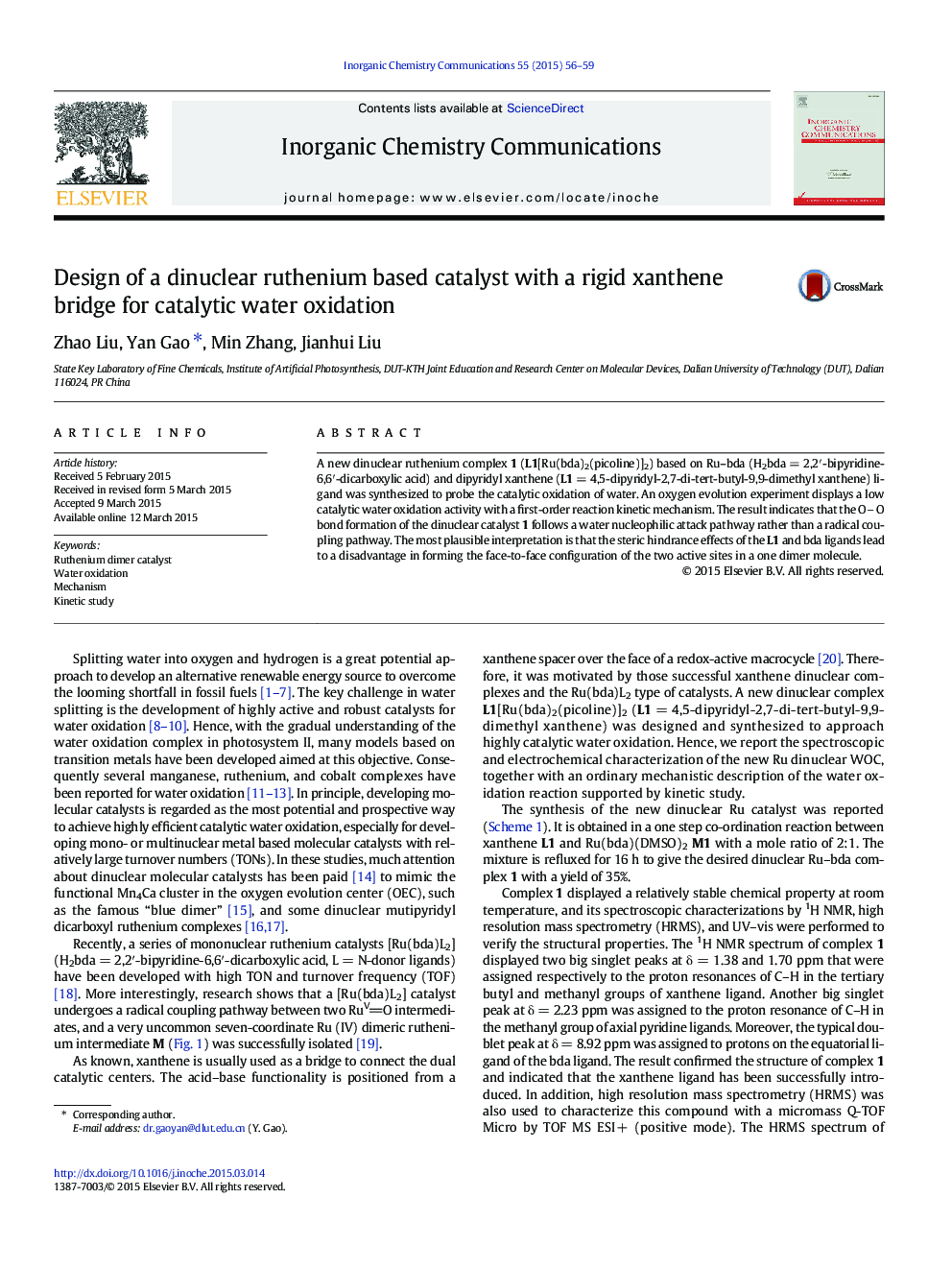| Article ID | Journal | Published Year | Pages | File Type |
|---|---|---|---|---|
| 1305439 | Inorganic Chemistry Communications | 2015 | 4 Pages |
•Development of a dinuclear ruthenium complex for probing catalytic water oxidation•Kinetic studies revealed a first-order reaction mechanism.•The results implied a water nucleophilic attack pathway for OO bond formation.
A new dinuclear ruthenium complex 1 (L1[Ru(bda)2(picoline)]2) based on Ru–bda (H2bda = 2,2′-bipyridine-6,6′-dicarboxylic acid) and dipyridyl xanthene (L1 = 4,5-dipyridyl-2,7-di-tert-butyl-9,9-dimethyl xanthene) ligand was synthesized to probe the catalytic oxidation of water. An oxygen evolution experiment displays a low catalytic water oxidation activity with a first-order reaction kinetic mechanism. The result indicates that the OO bond formation of the dinuclear catalyst 1 follows a water nucleophilic attack pathway rather than a radical coupling pathway. The most plausible interpretation is that the steric hindrance effects of the L1 and bda ligands lead to a disadvantage in forming the face-to-face configuration of the two active sites in a one dimer molecule.
Graphical abstractA new dinuclear ruthenium complex 1 was synthesized to probe the catalytic oxidation of water. An oxygen evolution experiment displays a low catalytic water oxidation activity with a first-order reaction kinetic mechanism. The result indicates that the OO bond formation of the dinuclear catalyst 1 follows a water nucleophilic attack pathway rather than a radical coupling pathway.Figure optionsDownload full-size imageDownload as PowerPoint slide
